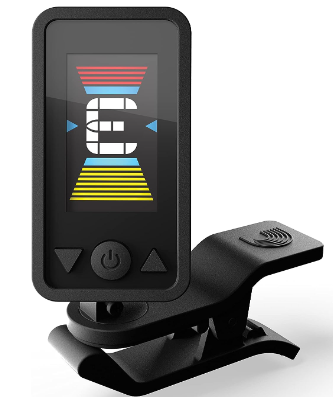Tuning your guitar is the first and crucial step to producing beautiful melodies. Whether you’re a beginner or have been playing for a while, here’s a step-by-step guide to help you tune your guitar accurately:

1. Get a Reliable Tuner:
Invest in a good quality electronic tuner. You can also use tuner apps available for smartphones. These tools make the tuning process much easier.
2. Understand Standard Tuning:
The standard tuning for a guitar is E4, A3, D3, G2, B2, E2, starting from the lowest-pitched string (the thickest one) to the highest-pitched string (the thinnest one).
3. Start with the Low E String:
Pluck the low E string (the thickest one). Look at the tuner display – it will show whether the note is too low, too high, or in tune. Adjust the tension with the tuning peg until the indicator is at the centre.
4. Move to the A String:
Repeat the process for the A string. Pluck the string, check the tuner, and adjust accordingly.
5. Continue String by String:
Move through each string, adjusting and checking the tuning. Remember the phrase “Eddie Ate Dynamite, Good Bye Eddie” to recall the string names.
6. Check Octave Tuning:
After tuning each string, check the octave tuning. Play a note on the 12th fret of a string – it should sound the same as the open string one octave below.
7. Fine-Tune if Necessary:
If your tuner has a needle or display that shows how close you are to the correct pitch, you can fine-tune by making small adjustments to the tension.
8. Use Harmonics:
You can also use harmonics at the 5th and 7th frets to check the tuning. The pitches of these harmonics should match the pitches of the open strings.
9. Repeat the Process:
Tuning can be affected by temperature and playing. It’s a good habit to check your tuning regularly, especially if you’re playing for an extended period.
10. Explore Alternate Tunings:
As you advance, explore alternate tunings like drop D or open tunings for different sounds and playing styles.
Remember, tuning is a skill that improves with practice. The more you do it, the more accurate and efficient you’ll become. Happy tuning!
#GuitarTuning #BeginnerGuitar #TuneYourGuitar





